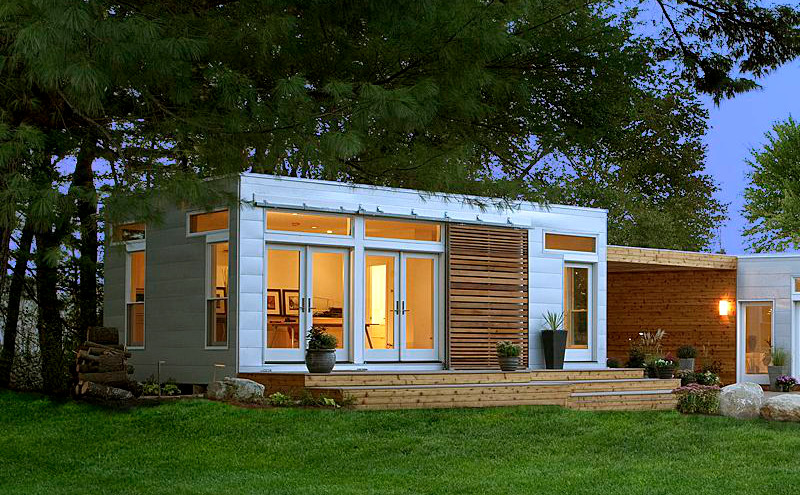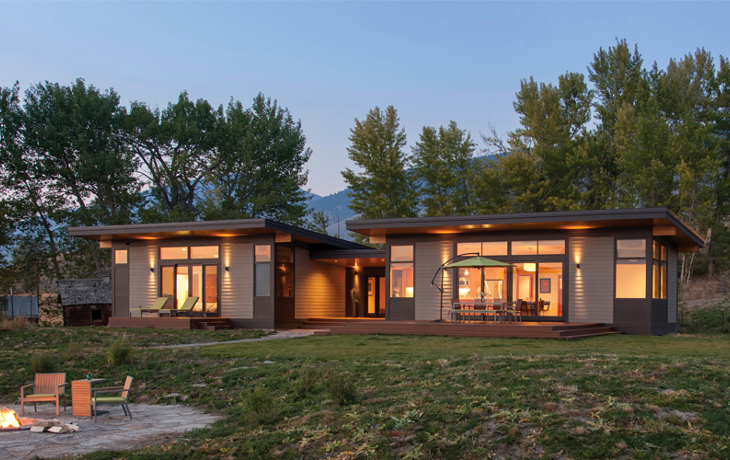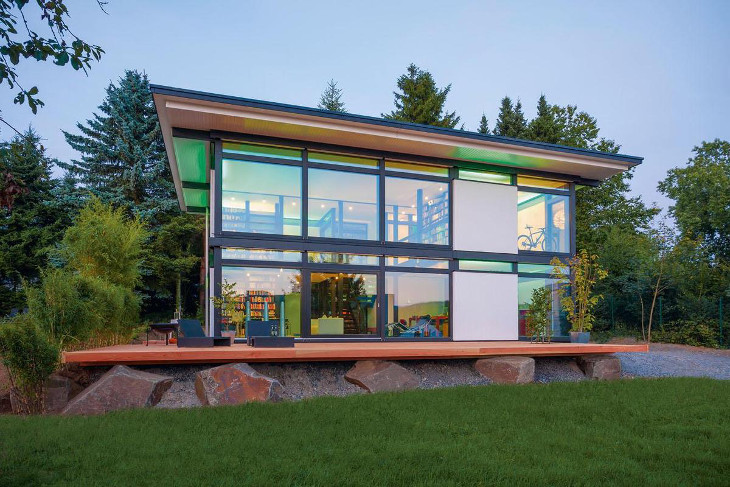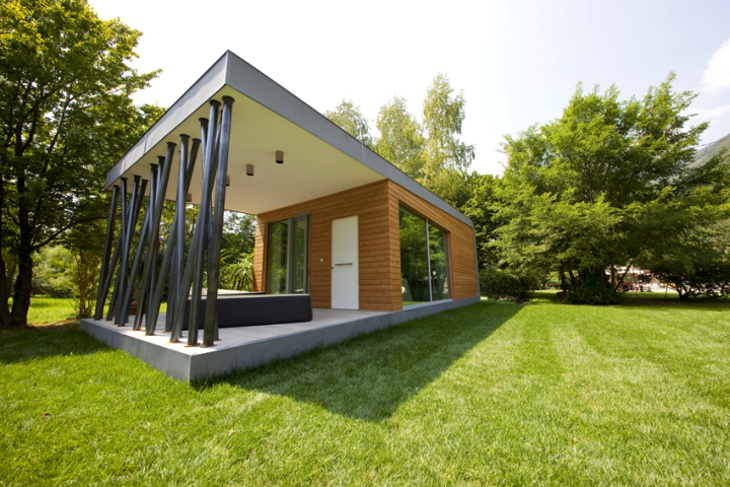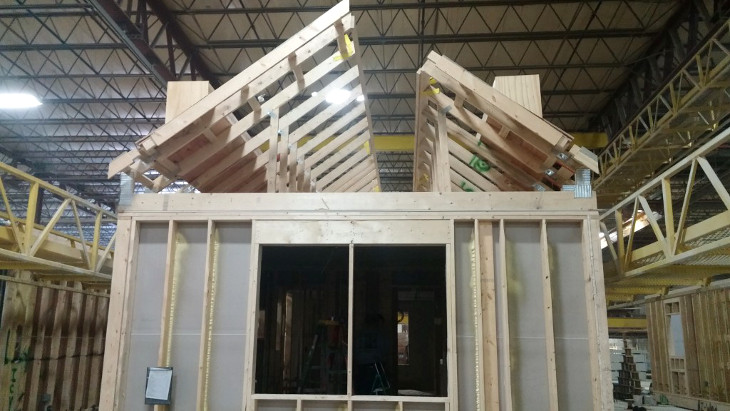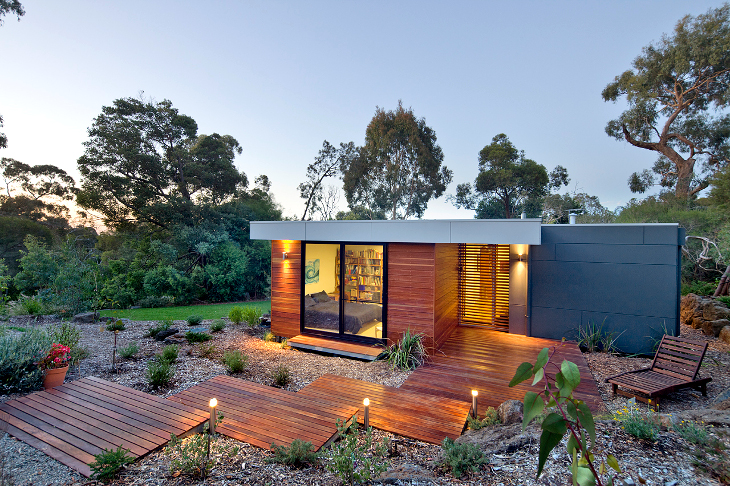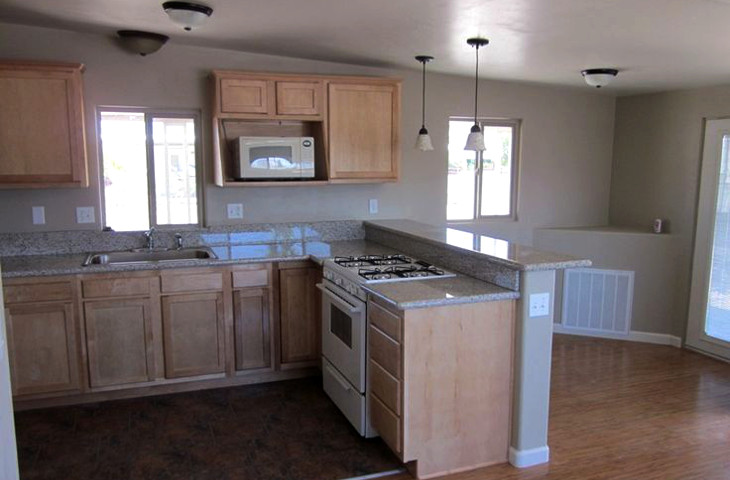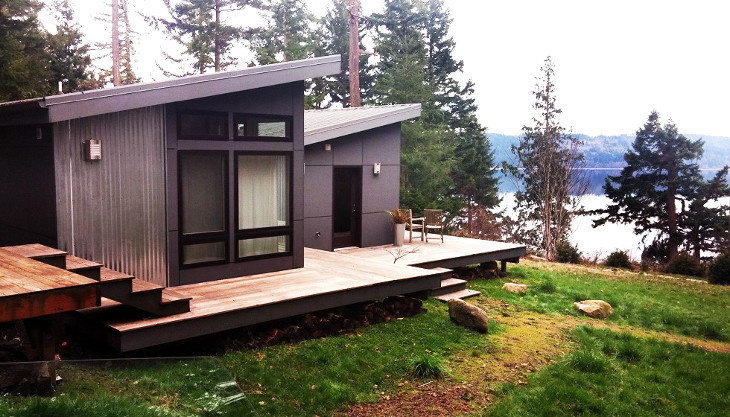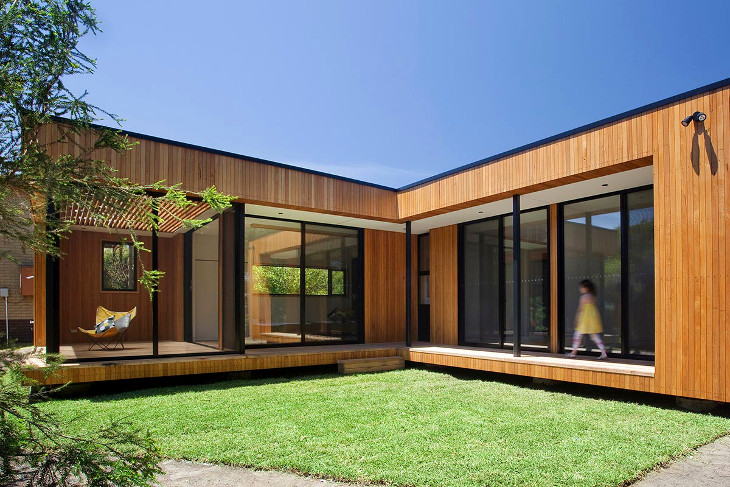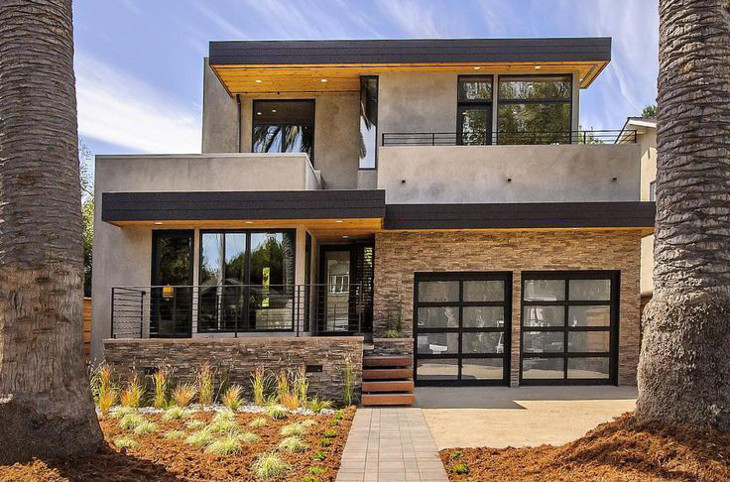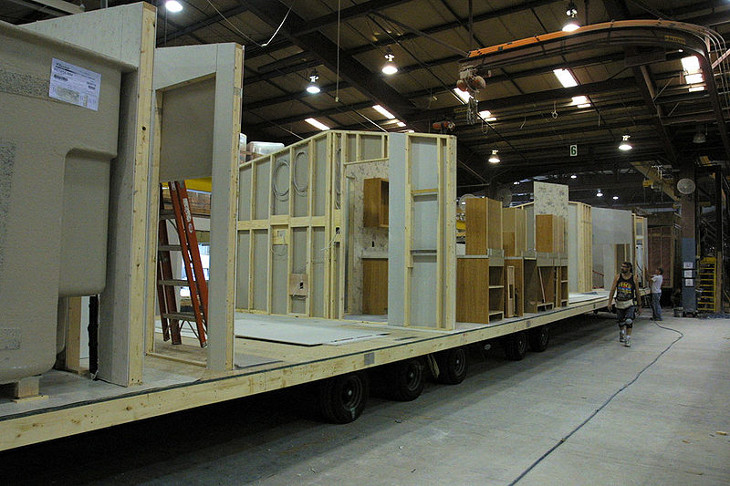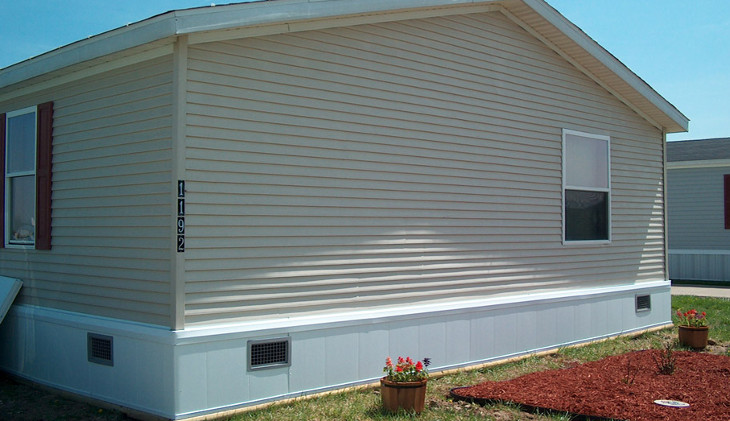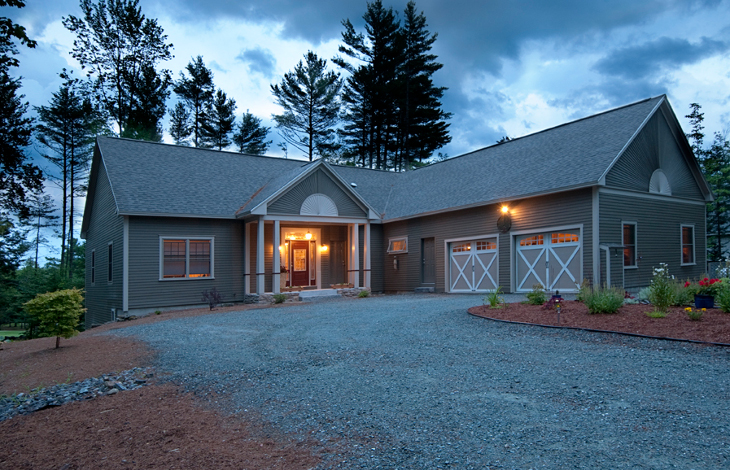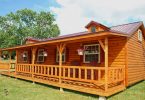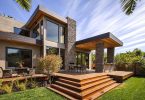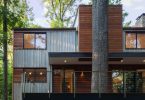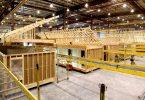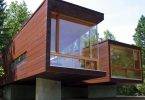The bulk of the monthly expenses for running a household go for heating and cooling of the home. An effective way to remedy this is to look into making a more energy efficient modular home for you and your family.
If you live in a newer type of modular home, then some of the energy efficiency recommendations most likely have been already implemented. But if your home is older, then it most likely lacks many energy efficient details. So keep reading ahead and we’ll explain all the important things related to living in an energy efficient modular home.
What does energy efficient mean?
Energy efficiency or efficient energy use is the aim to reduce the amount of energy required to provide certain service or product. In terms of household, energy efficient is a home that is properly insulated and uses less energy for heating and cooling and still achieving the desired temperature.
Other significant energy consumers are the lighting sources, appliances and hot water boiler. In energy efficient homes these are also made energy efficient in various ways.
There are several motives for improving the energy efficiency of your home. First is, of course, the economic factor – reducing the energy consumption lowers the energy cost and in the long run results in significant savings.
Another motivating factor is the “green” factor, meaning the more energy you save in your home; the less energy should be produced, thus protecting the environment from pollutants by power plants etc. This is also the aim of the International Energy Agency, to lower the global energy needs by one-third by 2050.
What should you do to make an energy efficient modular home?
To really make an energy efficient modular home, there are many things that should be considered, and we’ll go into more detail next.
Location
The location where you will install your modular home has a major influence on the energy efficiency. If the place is sunny most of the year, you can use this to your advantage and utilize the free power of the sun. This can be done by either photovoltaic cells to make electric power, by using passive solar heat or a means to heat water.
If the location of your choice has some other heat source like a thermal well, you can also utilize this to heat your home and save energy. There is also the option of a ground source heat pump that uses the stable temperature deeper in the ground and can be used both for heating and cool your home.
If your home is located somewhere where the colder climate prevails and you have to heat your home for longer periods during the year, you should be aware of the orientation of the house and the winds and air currents that flow through the area.
For example, it is easier to heat a smaller home sheltered in a natural setting, than a larger home on top of a hill that is more exposed to the elements. Also, trees and hills can provide shade and even block air currents.
The orientation of the house in relation to the sun is very important. In the Northern hemisphere, the houses should have south facing windows to increase the light and heat from the sun that enters the building and maximizing the passive solar heating; vice versa for houses on the Southern hemisphere.
Design
The design of the modular home has a big influence on the energy efficiency. You will choose your modular home depending on your needs, wishes and budget. But you should always consider the overall cost of maintaining your home and make suitable plans.
How are you going to heat/cool it if you have a number of smaller rooms or one huge open space kitchen/dining/living room? In the end, the common sense should win and you should choose the most energy efficient option that will cover your needs.
This means that you should seriously look at the available options and make sure you understand them correctly. If you can afford to install it, the central heating/cooling system is ideal for proper heating and cooling of your home; provided that your home has sufficient insulation.
The central heating system can be powered by electricity, gas or wood and can be connected to the hot water supply, thus eliminating the need to use extra energy to heat water.
Insulation
We have mentioned the importance of insulation. But this is so important that we’ll go into more detail explaining the importance of proper and sufficient insulation.
When talking about energy efficient modular homes, the proper insulation serves as a key factor in lowering the energy consumption of the home, seeing as you spend the most of the energy to heat and cool the home.
The insulation of a home also offers soundproofing, preventing most unwanted outside noises interfering with your daily life.
Insulation can be added in the floors, exterior and interior walls, ceilings and roof. There are many types of insulation materials like mineral wool, fiber glass wool, cellulose, rock wool, polystyrene foam, urethane foam, cork, concrete etc.
Their proper use ensures that your home will have the sufficient thermal insulation which in term guarantees a comfortable moderate temperature inside without having to input much energy into heating and/or cooling your space.
Some of the insulation offers not only thermal, but also hydro isolation, which is great for areas that are affected by lots of rainfall and snow. The proper insulation also offers protection from rodents and termites, as it is more difficult for them to reach the wooden beams of the house frame through a thick stock of rock or mineral foam.
Foundation
The foundation on which the modular home is placed has a significant role in the energy efficiency of the home. The modular homes are built in a factory, following an established pattern and design, but the foundation is built by contractors.
When you start with the building of the foundation of your new modular home, you should insist on adequate thermal and hydro insulation. You should also make sure that the water and power supply lines are properly installed and insulated.
Roof
Seeing that the roof covers the entire house, it is very important for it to be properly insulated, and covered with materials suitable for your location. Dark roofs attract more heat that gets transferred into the lower portion of the home adding additional heat in summer.
Roofs made from light reflective materials reflect most of the sunlight and do not allow much of the heat to get into the home, lowering the energy needed for cooling of the home up to 40 percent.
It is important to add insulation under the roof tiles, shingles etc, so you will get another layer of insulation between the living quarters and the roof, preventing the loss or addition of heat.
Lighting sources
The lighting sources are another issue when we speak about energy efficient modular home. If your home is built in a shaded area, you will have to use more artificial lighting, increasing the energy consumption.
The proper orientation of windows and if possible, the addition of skylights will increase the natural light that comes into the home, lowering the need to use artificial lighting.
It is necessary to use artificial lights, but a way to increase energy efficiency is to replace the old incandescent light bulbs with newer compact fluorescent lights or even with LED lights.
The energy consumption of the compact fluorescent light is two thirds less than incandescent, and they last about 6 times longer. The case with the LED’s is even more pronounced, as they use ten times less energy than incandescent lights and last up to ten times longer.
Even if the compact fluorescent lights and LED cost much more initially, in the long run they are the smarter, cheaper choice.
Appliances
If you aim to make a better energy efficient modular home, you should also take note of the appliances that you install in there. Today on the market there is a fair amount of choices when looking for appliances for your home. Most of them are labeled with the energy input labeling.
Modern appliances today use far less energy than those that are older than ten to fifteen years. If your refrigerator is made in 2001 or earlier, it spends up to 40 percent more energy than a new one made in 2016. Make sure you update your appliances regularly to lower the energy consumption.
Another issue is the time of day when the appliances are used. If you use the air conditioner in the hot afternoon, it will consume more energy. You can air dry your clothes to avoid using the clothes dryer. Hence, plan the use of your appliances accordingly, to lower the energy consumption and increase efficiency.
Windows and doors
The windows and doors of your home have an aesthetic impact on your home. Seeing that they provide the natural light to your home and also enable ventilation, the windows have to be very energy efficient to prevent energy losses. Today’s markets offer a variety of window designs, materials and glazing.
There is something that is called energy performance rating of windows, which tells all the important features of a window so you will be able to choose the correct one for your house.
If you use passive solar heating, then you should consider the proper window design, orientation and size of glass to maximize the heat in winter and minimize it in summer. The south facing windows should be larger to maximize the heat and light in winter, and overhangs need to be installed to prevent direct sunlight entering the home in summer.
Also the north, east and west facing windows should allow for enough light to enter the home.
When selecting the windows to your home, you should also consider the framing, seeing also that heat enters and escapes through the frames of the windows. The glazing is important; today one of the most popular designs is the double panel gas filled window where the outside panel has a low – E and/or solar control coating.
Another way to increase the energy efficiency of your windows is to add proper shutters, blinds and/or curtains and drapes to your windows.
The exterior doors to your home have the same importance as the windows. They should also be properly made, installed and offer good air sealing. Although wood doors are more beautiful, there are some better choices on the market today.
There are doors made from insulated steel and fiberglass that have greater energy efficiency than regular wood doors. The popular choice is a steel door with a polyurethane foam filling inside, which has up to five times more insulating value than a wooden door.
The glass doors to patios and balconies are also very important. They tend to be made from large glass panels, and let heat escape/enter more freely. There are models with several layers of low – E glass and sufficient thermal barrier that provide better thermal insulation and with it better energy efficiency.
Specifications of energy efficient modular homes
All the above mentioned factors have their role in creating a truly energy efficient modular home. There are also many manufacturers of modular homes on the market today, all claiming to have their own improvements on the energy efficiency.
One big advantage of building a modular home is the superior energy efficiency, especially in newer models. The modular home is built in a factory setting with controlled production process. This allows for more efficient overall build, resulting with a more quality product.
The walls of a modular home
The floor, walls and ceilings make the bulk of the modular home. Their design and setup can be made according to standard or custom requirements, but the internal part is almost always the same. They are built starting with a wooden frame to get the main skeleton.
Later there is the addition of doors, windows and openings. The part between the studs of the frame is filled with appropriate insulation. Most modern modular homes have rock or mineral wool insulation that prevents spreading of fires and is rodent repellant.
The interior walls also have internal insulation like blown polyurethane foam, to offer sound proofing. After installation of the internal insulation, the exterior and interior walls can be finished with the desired finish, like sheetrock, wooden paneling, stone façade etc.
The outline of the installed windows and doors is sealed with proper sealants to ensure no heat can enter or escape. The separate modules are combined together to get an airtight unit that offers many energy efficient solutions.
Other features of energy efficient modular homes
Many manufacturers offer a combination of heating and cooling systems and claim to be up to 30 percent more energy efficient. There is also the use of new window framing materials, low – E glass paneling, bathroom and kitchen ventilation systems; all of which provide some input in the overall energy efficiency.
For a home to be energy efficient, you should look into the most sustainable source of heating. Even if your home is insulated sufficiently and airtight, there are issues that arise from using improper heating sources.
For example: an older model natural gas furnace usually has about fifty percent efficiency, whilst a newer model can have up to ninety-five percent efficiency. This can significantly lower the energy use and carbon emission and even the natural gas bill.
The same goes for wood burning stoves, where the increased efficiency has a significant impact on the overall energy efficiency of your modular home.
There are things that you can not skip when building energy efficiency. The proper orientation, design, adequate window placement and insulation all have their impact of the energy efficient modular home.
There are however some steps that are good to be made, but not immediately. Some of those are insulation of the basement ceiling or the addition of storm shutters.
Already have a modular home? Here is how to make it energy efficient
Above we have talked about general energy efficiency and making sure your new modular home meets the energy efficiency standards. Now, we’ll give you some suggestions if you already live in a modular home and want to increase its energy efficiency.
If you plan to remodel or significantly renovate your modular home, you can add many amenities that will help decrease energy losses, such as the following:
- Install new energy efficient doors and windows – this way you will be sure that you get the best possible protection
- Add insulation to the under – floor – although your house may have had some under – floor insulation, you should renew it with newer materials for better efficiency
- Install insulated skirt around your house – if your modular home is raised, then the space underneath is exposed and prone to air flow that cools your home. Installing an insulated skirt prevents air flow and cooling of the floors from below
- Add proper insulation to the walls – older homes tend to have less insulation, so adding an extra layer of blown foam can fill the gaps and create additional insulation
- Insulate the roof and make needed repairs – as with walls, the roofs of older modular homes have less insulation, so you can either add blown foam through a hole or strip the roof and add insulation, and then install new roof covers to make sure you have the best protection from above
Another thing you can do is add renewable energy sources to your property, like a geothermal pump, solar powered boiler, or installation of solar electric (photovoltaic) systems.
If some of these improvements do not meet your budget, than you can do basic insulation like add weather – stripping to your doors and windows; add caulking to openings that do not seal well; air seal the openings around fixtures and ducts to prevent air form leaking into unwanted areas; and replace the lighting and appliances with more energy efficient models.
To summarize
An energy efficient modular home may mean a bigger investment in the beginning, but it is more budget friendly in the long run. Having a properly insulated home with quality windows, doors, lighting and appliances, it means that you will live more comfortably and will not spend as much on the monthly utility expenses.
You can add renewable energy sources to your home, this way you will increase the efficiency and also the value of the home. Considering the weather changes that have occurred these past few years, it is a very smart move to invest in insulation and making it a more energy efficient modular home.
Already have experience on this topic? Leave us your thoughts and opinions about energy efficient modular homes in the comment section below.

